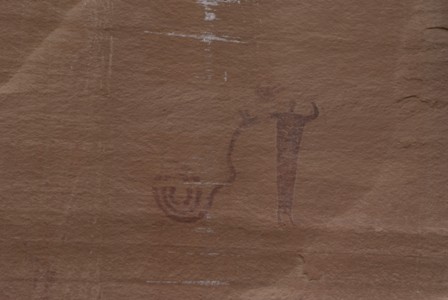If you need proof that prehistoric man had some artistic talent, you need look no further than the walls of Buckhorn Wash.

As you round a curve on Buckhorn Draw Road and approach a small parking lot, there by the side of the road is a bold, clear display of 2,000-year-old art.

These paintings are surprisingly bold and well-preserved, despite some problems with graffiti that have mostly been removed. The drawings were left behind by people of the “Barrier Canyon” culture, somewhere around the time that B.C. turned into A.D.

While there are some estimates on who left these drawings here, and when they created these works of art, one question that remains unanswered is why. The meaning behind the images may never be unlocked. And some, like these, add an extra mystery. Take a look at the chests of the figures. Their hearts have been chiseled away. Was this intentional scarring left by the original artist, or another group of people that came through the area, centuries later?

In this part of the panel, it appears the artist used the natural curve in the rock as a stage for his characters.

These are called the “rain angels”, though it’s unclear if the lines radiating from them are angelic wings, rays of power, or something modern man doesn’t understand. One of the characters has not one, but four holes pecked in its torso. But, like almost everything else about these images, the meaning is a mystery.

Painted art isn’t the only thing on display in this outdoor museum. In addition to the pictographs (painted drawings), there are also some petroglyphs: images that have been chipped into the rock. These were most likely left behind by the people of the Fremont culture. They’re practically new, relatively speaking — they were only made about 1,000 years ago.

Leaving the pictograph panel, the road continues its scenic drive through the Wash. The historic swinging bridge over the San Rafael River isn’t far from here.





No comments